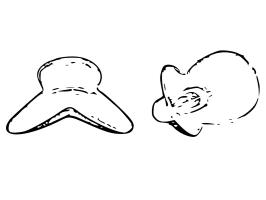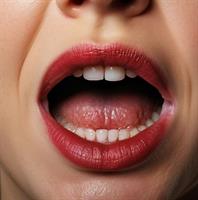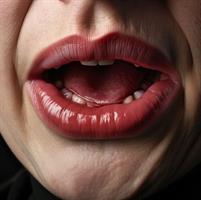Are you tired of dealing with the symptoms of obstructive sleep apnea (OSA), such as daytime sleepiness, snoring, and interrupted sleep? You’re not alone. Millions of people suffer from OSA, and it can have a significant impact on their quality of life.
Fortunately, there are treatment options available, and one of the most promising is the use of a tongue stabilizing device.
In this blog post, we will discuss the benefits and effectiveness of these devices, specifically the tongue stabilizing device, in treating sleep apnea, as well as how to properly use them to achieve the best results.
Key Takeaways
-
A tongue stabilizing device (TSD) is a type of anti-snoring apparatus designed to help alleviate snoring by holding the tongue in a forward position during sleep, which helps to keep the airway open.
-
They have been proven effective in treating the condition with success rates up to 71%, but fitting and adjusting correctly is essential for optimal performance.
-
It is important to seek professional help when using a tongue stabilizing device, as potential side effects may occur depending on individual needs.
Understanding Tongue Stabilizing Devices
Designed to mitigate snoring and other sleep-related breathing problems like obstructive sleep apnea, tongue stabilizing devices are a type of medical device. Composed of soft, medical-grade silicone, these devices fit comfortably over the tongue and are held in place with gentle negative suction. They work by holding the tongue forward, preventing it from collapsing into the airway and obstructing breathing during sleep.
We've reviewed the best tongue stabilizing devices, some of which combine both tongue stabilizing and jaw advacement together.
There are several types of anti snoring devices available in the market, including tongue stabilizing devices, each with its own unique design and features. Some of the most popular devices include the Good Morning Snore Solution and the Nose Breathe Tongue Positioner. These devices vary in terms of material, design, and mechanism of action, but all share the common goal of helping individuals with sleep apnea breathe more easily during sleep.
The Science Behind Tongue Stabilizing Devices
Tongue stabilizing devices work by utilizing negative air pressure to hold the tongue forward and create more space in the back of the throat. This prevents the tongue from collapsing into the airway, which is a common cause of sleep apnea. The devices are designed to fit comfortably in the mouth and create a seal around the tongue, ensuring that it remains in a forward position throughout the night.
Studies indicate the effectiveness of tongue stabilizing devices in treating sleep apnea.
Key Findings
-
The devices were successful in 71% of cases, making them a viable treatment option for patients with mild to severe sleep apnea.
-
The devices were found to reduce subjective estimations of snoring by 68%, making them an effective treatment for sleep-related breathing disorders.
-
Tongue stabilizing devices demonstrated a comparable improvement in daytime symptoms to that observed with mandibular advancement devices (MAD), which are a type of oral appliance therapy.
However, bear in mind that the success rate of tongue stabilizing devices may fluctuate with variables like sleep apnea severity, the existence of other sleep-related breathing disorders, and individual device tolerance.
In some cases, the effectiveness of the device may be reduced if it does not properly fit the individual’s mouth or if they have difficulty tolerating the sensation of the device. Therefore, it is essential to work with a healthcare professional to determine the best treatment option for your specific needs.
Types of Tongue Stabilizing Devices

As mentioned earlier, there are several types of tongue stabilizing devices available in the market, each with its own unique design and features. One popular anti snore device is the Good Morning Snore Solution, which offers the following benefits:
-
Does not require custom fitting or routine adjustment
-
Designed to be easy to use and comfortable to wear
-
Attractive option for many individuals with sleep apnea
Another popular tongue stabilizing device is the SleepTight Mouthpiece, which combines both tongue stabilization and jaw advancement. This device is also easy to use, however it uses custom fitting. It is a convenient option for those who struggle with sleep apnea and nasal obstruction.
Selecting a tongue stabilizing device that suits your needs is crucial as its effectiveness can differ based on aspects like mouth shape, tongue size, and sleep apnea severity. Working with a healthcare professional can help you determine the best device for your unique situation and ensure the best possible results from your treatment.
Advantages of Tongue Stabilizing Devices Over Other Treatments
When contrasted with other anti snoring sleep apnea treatments like continuous positive airway pressure (CPAP) machines and oral appliances, tongue stabilizing devices present numerous advantages for maintaining an open upper airway.
Some advantages of tongue stabilizing devices include:
-
They tend to be more comfortable and easier to use than other treatments.
-
Many individuals find the sensation of wearing a tongue stabilizing device to be less intrusive and more tolerable than the sensation of wearing a CPAP mask or an oral appliance.
-
Increased compliance and better treatment outcomes.
Additionally, tongue stabilizing devices can be more cost-effective than other treatment options. While CPAP machines and oral appliances can be quite expensive, tongue stabilizing devices are generally more affordable, making them an attractive choice for individuals who are seeking a cost-effective solution for their sleep apnea.
Nevertheless, seeking advice from a healthcare professional to identify the most suitable treatment option for your unique needs and guarantee optimal results, including achieving a complete or partial response, is crucial.
Comfort and Convenience
Comfort and convenience are among the key benefits of tongue stabilizing devices. The tongue stabilizing device tsd offers:
-
A comfortable fit while worn during sleep, as they are designed to fit the individual’s mouth and teeth
-
Adjustable features that can be tailored to the user’s unique size and shape mouth, providing a personalized fit
-
Ease of use, as tongue retaining devices do not require any complex adjustments or repositioning before bed
In comparison, other treatments for obstructive sleep apnea patients, such as CPAP machines and oral appliances, can be more cumbersome and uncomfortable to use, potentially contributing to daytime sleepiness. CPAP machines require the user to wear a mask over their nose and/or mouth, which can be uncomfortable and cause feelings of claustrophobia for some individuals.
Oral appliances, on the other hand, can cause discomfort or pain in the teeth and jaw, as they work by repositioning the jaw to open the airway and alleviate sleep disordered breathing, also known as obstructive sleep apnea syndrome or obstructive sleep apnoea.
The comfort and convenience of tongue stabilizing devices make them an attractive option for many individuals with sleep apnea, as they are:
-
More likely to consistently use a treatment that is comfortable and easy to use
-
This increased compliance can lead to better treatment outcomes
-
An overall improvement in sleep quality and daytime symptoms.
Cost-Effectiveness
In terms of cost-effectiveness, tongue stabilizing devices also have the upper hand. They are generally more affordable than other treatment options, such as continuous positive airway pressure (CPAP) machines and oral appliances. This makes them an attractive choice for individuals who are seeking a cost-effective solution for their sleep apnea.
In addition to their lower initial cost, tongue stabilizing devices may also be more cost-effective in the long run due to their lower maintenance costs and potential insurance coverage. It is important to note, however, that the cost-effectiveness of tongue stabilizing devices can vary depending on factors such as the severity of sleep apnea, the presence of other sleep-related breathing disorders, and individual tolerance of the device.
As with any treatment option, collaborating with a healthcare professional to find the most suitable treatment for your unique needs and budget is vital.
Effectiveness of Tongue Stabilizing Devices in Treating Sleep Apnea
Clinical studies and research have shown that tongue stabilizing devices can be effective in treating sleep apnea. One study found that the devices were successful in 71% of cases, making them a viable treatment option for patients with mild to severe sleep apnea. The devices were also found to reduce subjective estimations of snoring by 68%, making them an effective treatment for sleep-related breathing disorders.
However, bear in mind that the success rate of tongue stabilizing devices may fluctuate with variables like sleep apnea severity, the existence of other sleep-related breathing disorders, and individual device tolerance. In some cases, the effectiveness of the device may be reduced if it does not properly fit the individual’s mouth or if they have difficulty tolerating the sensation of the device.
Tongue stabilizing devices have also been shown to be as effective as other treatments, such as mandibular advancement splints, in relieving sleep apnea symptoms. This makes them a promising alternative treatment option for individuals who cannot tolerate or do not respond well to other treatments such as continuous positive airway pressure (CPAP) machines or oral appliances.
In conclusion, for many individuals with sleep apnea, tongue stabilizing devices can serve as an effective treatment option. However, it is important to work with a healthcare professional to determine the best treatment option for your specific needs and to ensure the best possible results from your treatment.
How to Properly Use a Tongue Stabilizing Device
To maximize the results with a tongue stabilizing device, adhering to the correct steps for fitting, adjusting, and using the device is critical. Begin by rinsing the device under warm water before use.
Next, insert your tongue into the device’s sleeve and create suction by gently squeezing the sides of the device. This will help to maintain a forward tongue position throughout the night.
For optimal results, it is recommended to fit the device while sitting or standing. Remember to remove the device in the morning when you awaken and clean it as directed by the manufacturer or your healthcare professional.
Fitting and Adjusting the Device
For the effectiveness of a tongue stabilizing device, it’s critical to secure a proper fit and make necessary adjustments. The tongue retaining device is designed to fit comfortably in the mouth and create a seal around the tongue, ensuring that it remains in a forward position throughout the night. If the stabilizing device feels uncomfortable or does not seem to be working as intended, it may be necessary to make adjustments to achieve a better fit.
To adjust the device, you can either withdraw the tongue slightly or reduce the suction if there are strong sensations. It is important to experiment with different positions and adjustments to find the most comfortable and effective fit for your individual needs. If you continue to experience discomfort or difficulty using the device, consult a healthcare professional for guidance and advice on proper fitting and adjustment.
Bear in mind that accurate fitting and adjustment are critical to the effectiveness of a tongue stabilizing device. Regularly assess the fit of your device and make necessary adjustments as needed to ensure optimal performance and comfort throughout your treatment.
Cleaning and Maintenance
For extending its lifespan and maintaining optimal performance, it’s vital to keep your tongue stabilizing device clean and well-maintained. Regular cleaning helps to remove bacteria and debris that can build up on the device and lead to bad breath and other health concerns.
Follow the manufacturer’s instructions for cleaning and maintaining your device, and consult your healthcare professional if you have any concerns or questions about proper care and maintenance.
Potential Side Effects and Considerations
While tongue stabilizing devices can serve as an effective treatment option for many individuals with sleep apnea, being mindful of potential side effects and considerations when using the device is crucial.
Some users may experience discomfort, excessive salivation, or dental modifications while using a tongue stabilizing device. These side effects can often be managed and minimized with proper fitting and adjustment, as well as by practicing good oral hygiene and discussing any concerns with your healthcare professional.
Nasal obstruction can also be a factor that influences compliance with tongue stabilizing devices. Individuals with Class I occlusion tend to have higher compliance rates than those with Class II or III occlusions.
It is essential to work with a healthcare professional to determine the best treatment option for your specific needs and to address any potential side effects or challenges associated with using a tongue stabilizing device.
Besides the potential side effects mentioned above, being aware of other factors that may impact the effectiveness of a tongue stabilizing device, such as the severity of sleep apnea, the existence of other sleep-related breathing disorders, and individual device tolerance, is crucial. Working closely with a healthcare professional can help to ensure the best possible results from your treatment and minimize any potential side effects or challenges.
When to Seek Professional Help
If you encounter difficulty, discomfort, or pain while using a tongue stabilizing device, consulting a healthcare professional for guidance and advice is essential. They can help you determine whether adjustments need to be made to your device, explore alternative treatment options, or address any concerns you may have about the effectiveness of your treatment.
Additionally, if there is no improvement or worsening of your sleep apnea symptoms while using a tongue stabilizing device, it is advised to seek the counsel of a healthcare professional.
Regular check-ups and monitoring are essential when using a tongue stabilizing device to ensure the best possible results from your treatment and to address any potential concerns or challenges that may arise.
Summary
In conclusion, tongue stabilizing devices can be an effective, comfortable, and cost-effective treatment option for many individuals with obstructive sleep apnea. By understanding how these devices work, choosing the right device for your needs, and properly fitting and adjusting it, you can achieve better sleep and improved quality of life.
Remember to consult with a healthcare professional if you experience any difficulties or concerns with your device, and always practice good oral hygiene and regular device maintenance to ensure the best possible results from your treatment.
Frequently Asked Questions
Do tongue stabilizing devices work?
Tongue stabilizing devices have been found to be effective in managing obstructive sleep apnea by pulling the tongue forward and helping to improve breathing. Studies suggest that TSDs can reduce instances of waking up throughout the night due to low oxygen levels.
What are the side effects of tongue stabilizing device?
Using a TSD can result in soreness and discomfort of the tongue, excessive saliva or dry mouth, discomfort of the lips, teeth and gums, and potential effects on the temporomandibular joint.
What is the difference between a tongue stabilizing device and a MAD?
MADs work by moving the jaw forward to clear the airway, while TSDs do this by moving the tongue and widening the roof of the mouth respectively.
What device prevents your tongue from falling back?
Tongue retaining devices (TRDs) securely grip the tongue, preventing it from falling back and resulting in reduced snoring for back sleepers.
Do tongue stabilizing devices require a prescription?
Tongue stabilizing devices do not require a prescription, although consulting with a healthcare professional is recommended.
References
- The Tongue-Retaining Device: Efficacy and Side Effects in Obstructive Sleep Apnea Syndrome. https://www.ncbi.nlm.nih.gov/pmc/articles/PMC2762714/
- The tongue-retaining device: efficacy and side effects in obstructive sleep apnea syndrome. https://read.qxmd.com/read/19961027/the-tongue-retaining-device-efficacy-and-side-effects-in-obstructive-sleep-apnea-syndrome





